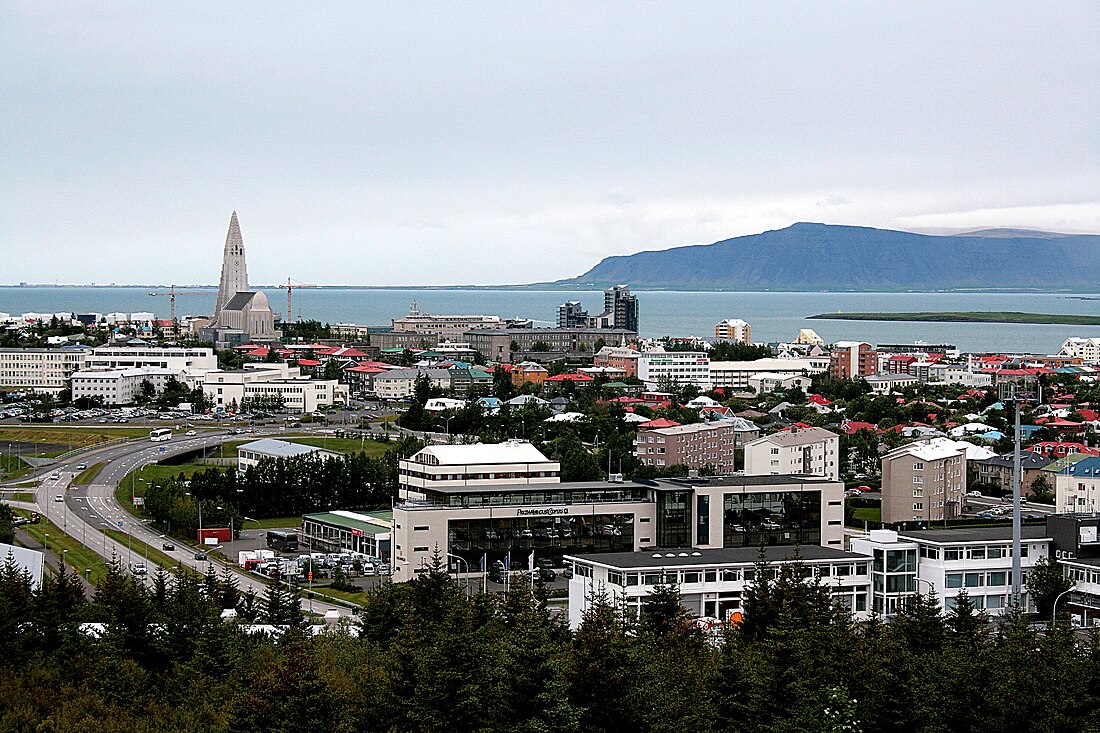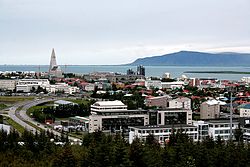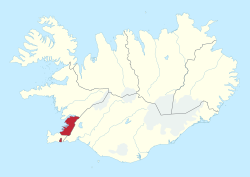Top Qs
Timeline
Chat
Perspective
Capital Region (Iceland)
Region of Iceland From Wikipedia, the free encyclopedia
Remove ads
The Capital Region (Icelandic: Höfuðborgarsvæðið [a]) is a region in southwestern Iceland. It is one of the two classified Nomenclature of Territorial Units for Statistics (NUTS-2) statistical regions of Iceland. The region encompasses an area of 1,046 km2 (404 sq mi), and consists of the national capital Reykjavík and six municipalities around it. Though it is much smaller than the other regions of Iceland, the region hosts about two-thirds of the population of the country.
Remove ads
Classification
The country of Iceland is organized into eight regions for statistical and administrative purposes.[3] The Nomenclature of Territorial Units for Statistics (NUTS) organizes the country into two broader level sub-divisions.[4][5] These are classified as a NUTS-2 statistical regions of Iceland, and incorporate one or more regions within it.[6][7] The regions form the NUTS-3 territorial units under them.[3]
Remove ads
Geography
Summarize
Perspective
The Capital Region of Iceland incorporates the regions around the nation's capital Reykjavík, encompassing an area of 1,046 km2 (404 sq mi).[1] The region is located in the south-western corner of the island, which is situated at the confluence of the North Atlantic and Arctic oceans.[8] Apart from its western coast, the region is bordered by Southern Peninsula to the south, Western Region to the north, and Southern Region to the east.[3]
Sub-divisions
Seven municipalities make up the Capital Region with Reykjavík being the most populated by far with 138,772 inhabitants.[2][9] While Kjósarhreppur is the largest municipality by area, spread around 284 km2 (110 sq mi), it is entirely rural and has the least population. Seltjarnarnes is the smallest municipality by land area.[1] Each municipality has its own elected council, and take care of utilities like waste policy, public transport and fire fighting.[10]

Remove ads
Demographics
Summarize
Perspective
The region hosts about two-thirds of the population of the country.[2] As of 2025, there are 249,054 people residing the region, of whom 126,527 are male, 122,378 are female, and 149 are non-binary/other. The population density is of 238.10 inhabitants per square kilometre.[2] The region has a very high Human Development Index, and is one of the most developed regions in Europe.[12] Of the labor force, nearly 25% are involved in professional and administrative work including government offices.[13]
For statistic purposes, Statistics Iceland has defined contiguous urban areas which are different from municipal boundaries. An urban area might straddle multiple municipalities and a single municipality may contain more than one urban area.[14] The Greater Reykjavík area houses more than 98% of the population of the region, incorporating three of the six municipalities completely, and most parts of Reykjavík and two other municipalities except Kjósarhreppur. The remaining population is spread across the minor urban areas of Álftanes, Grundarhverfi, and Mosfellsdalur. There is a small percent of population that is classified as rural.[14]
See also
Notes
- lit. 'capital area'; pronounced [ˈhœːvʏðˌpɔrkarˌsvaiːðɪθ] ⓘ
References
External links
Wikiwand - on
Seamless Wikipedia browsing. On steroids.
Remove ads





